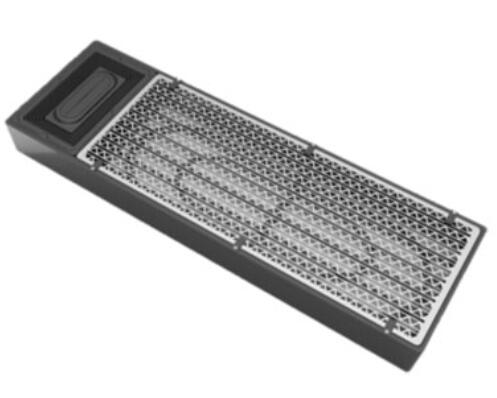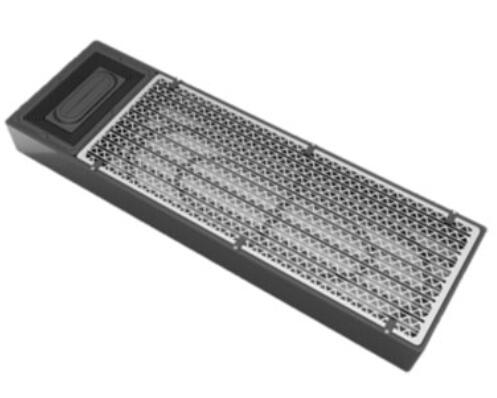Key Differences Between Rooftop and Integrated Bus Air Conditioning Units
Learn More

by
—
2024-11-07

SONGZ SONGZ SONGZ SONGZ
Battery thermal management is crucial for maintaining optimal performance, safety, and longevity of battery packs, especially in electric vehicles (EVs) and other energy storage systems. Two primary cooling approaches—active and passive—are commonly used to manage heat in batteries. Understanding the differences, benefits, and challenges of each approach helps manufacturers choose the best thermal management solution for their applications. This article explores the key aspects of active and passive cooling in battery thermal management systems.

Active cooling systems use external energy sources, such as fans, pumps, or refrigerants, to regulate battery temperature. These systems are highly effective at quickly reducing heat, making them ideal for high-power applications where batteries generate significant heat under heavy load or rapid charging conditions.
In an active cooling system, heat exchangers, coolant channels, or even liquid immersion setups are implemented to absorb and remove excess heat. The system often employs sensors to monitor battery temperature and adjust cooling levels in real-time, providing efficient control over temperature fluctuations. Although active cooling is effective in keeping battery packs within optimal temperature ranges, it has both advantages and drawbacks.
Precise Temperature Control
Active cooling systems allow for precise temperature adjustments in real-time. This feature is particularly important in EVs, where temperature can significantly impact battery life and performance.
Efficiency in High-Load Conditions
Since active cooling can dissipate heat quickly, it’s highly suitable for batteries under high-power demand, such as during fast charging or rapid acceleration in electric vehicles.
Extended Battery Life
By keeping the battery within its optimal temperature range, active cooling can extend battery life by reducing wear from thermal stress and limiting the degradation rate over time.
Higher Energy Consumption
Active cooling systems require an external energy source to power fans, pumps, and other components, which can lead to increased energy consumption and impact the overall efficiency of the system.
Added Complexity and Cost
Active cooling systems are generally more complex than passive systems, which can increase production and maintenance costs. The system’s reliance on additional components also means there are more potential points of failure.
Weight and Space Considerations
Because active systems require extra equipment, they often take up more space and add weight, which can be a limitation in compact or lightweight applications, like electric vehicles.
Passive cooling systems rely on the natural dissipation of heat without external power sources. This approach uses materials with high thermal conductivity, heat sinks, or even phase-change materials (PCMs) that absorb and release heat as needed. Unlike active cooling, passive systems do not require moving parts or additional energy to function, making them simpler and more cost-effective to implement. However, passive cooling is typically less effective for managing high heat loads, making it more suitable for applications with lower power requirements or those where temperature control is less critical.
Low Energy Consumption
Passive cooling systems operate without external energy sources, making them highly energy-efficient. This can improve the overall energy efficiency of the device, which is advantageous for EVs and other battery-powered applications.
Simplicity and Lower Cost
Passive cooling systems are generally less complex and costly compared to active systems. They do not require pumps, fans, or moving parts, which reduces production costs and maintenance requirements.
Improved Reliability
With fewer mechanical parts, passive systems have a lower risk of mechanical failure, which can improve the overall reliability and lifespan of the thermal management system.
Limited Cooling Capacity
Passive systems are typically less effective for high-power applications where batteries generate significant heat. In high-demand applications, passive cooling may struggle to maintain optimal battery temperatures.
Lower Temperature Control Precision
Passive cooling systems are less capable of providing precise temperature control, which can impact performance in applications where consistent battery temperature is critical.
Dependency on Thermal Environment
Passive systems are influenced by ambient temperature, meaning they may be less effective in extreme temperatures where additional heat management is required.
When choosing between active and passive cooling, it’s essential to consider the specific needs of the application. Active cooling is ideal for high-power, high-demand applications, such as electric vehicles, where precise temperature control is necessary for performance and battery life. Conversely, passive cooling is a cost-effective, energy-efficient option for lower-power applications where simplicity and reliability are prioritized over intensive cooling capabilities.
The choice may also depend on environmental conditions and space constraints. For instance, a hybrid approach that combines both passive and active cooling elements could be used to balance performance and efficiency in applications that vary in power demand and thermal load.
Both active and passive cooling methods offer unique benefits and challenges in battery thermal management. Active cooling provides rapid, precise temperature control but requires additional energy and equipment, making it ideal for high-demand applications. Passive cooling, on the other hand, is simple, energy-efficient, and reliable, though it may be insufficient for intensive applications. As a leading supplier in thermal management solutions, we offer tailored guidance to help businesses choose the best option for their needs. For more information on optimizing your battery thermal management system, contact us today.



R&D strength
About
Join us


Copyright ©2023 SONGZ, All Right Reserved.